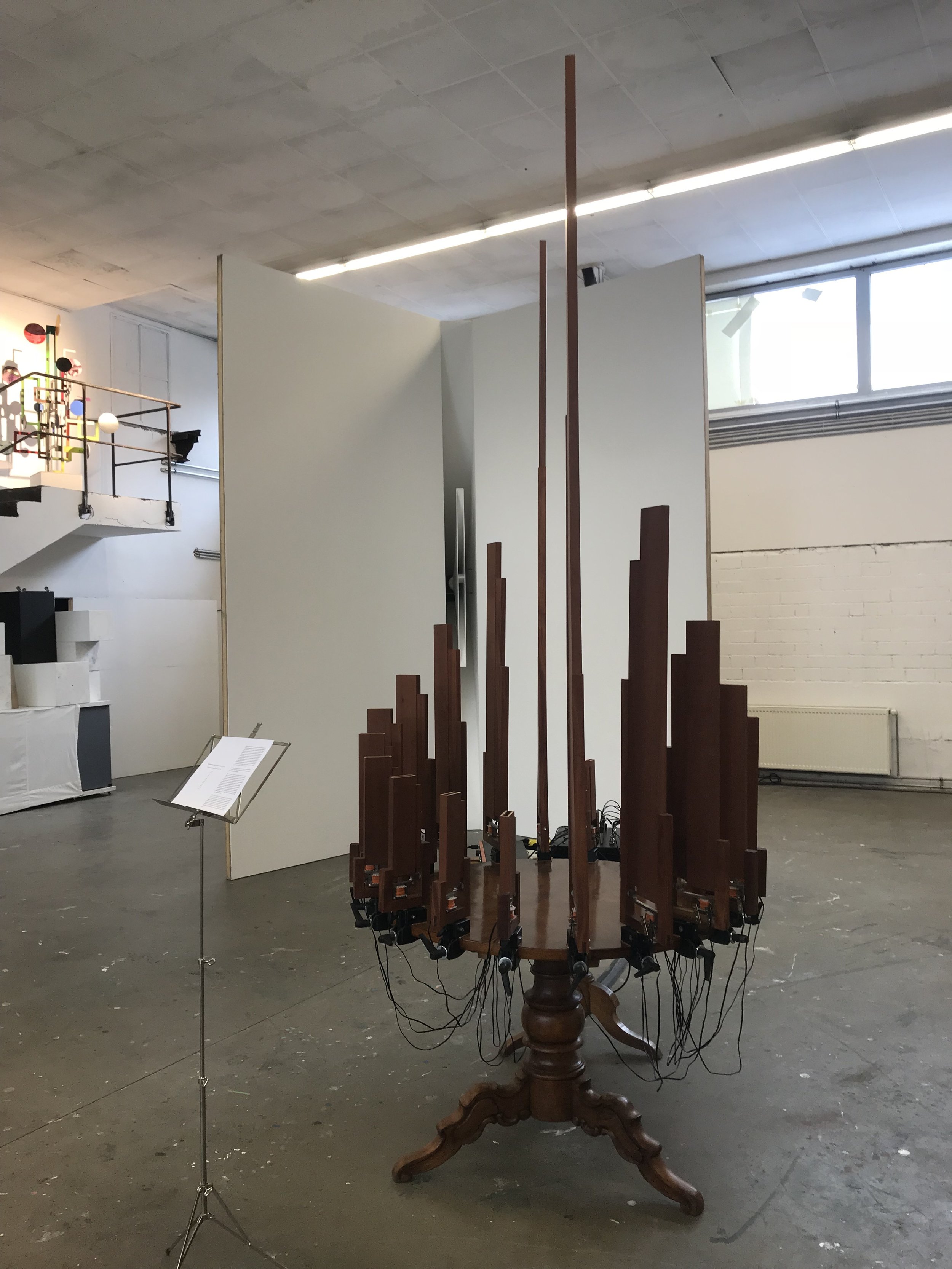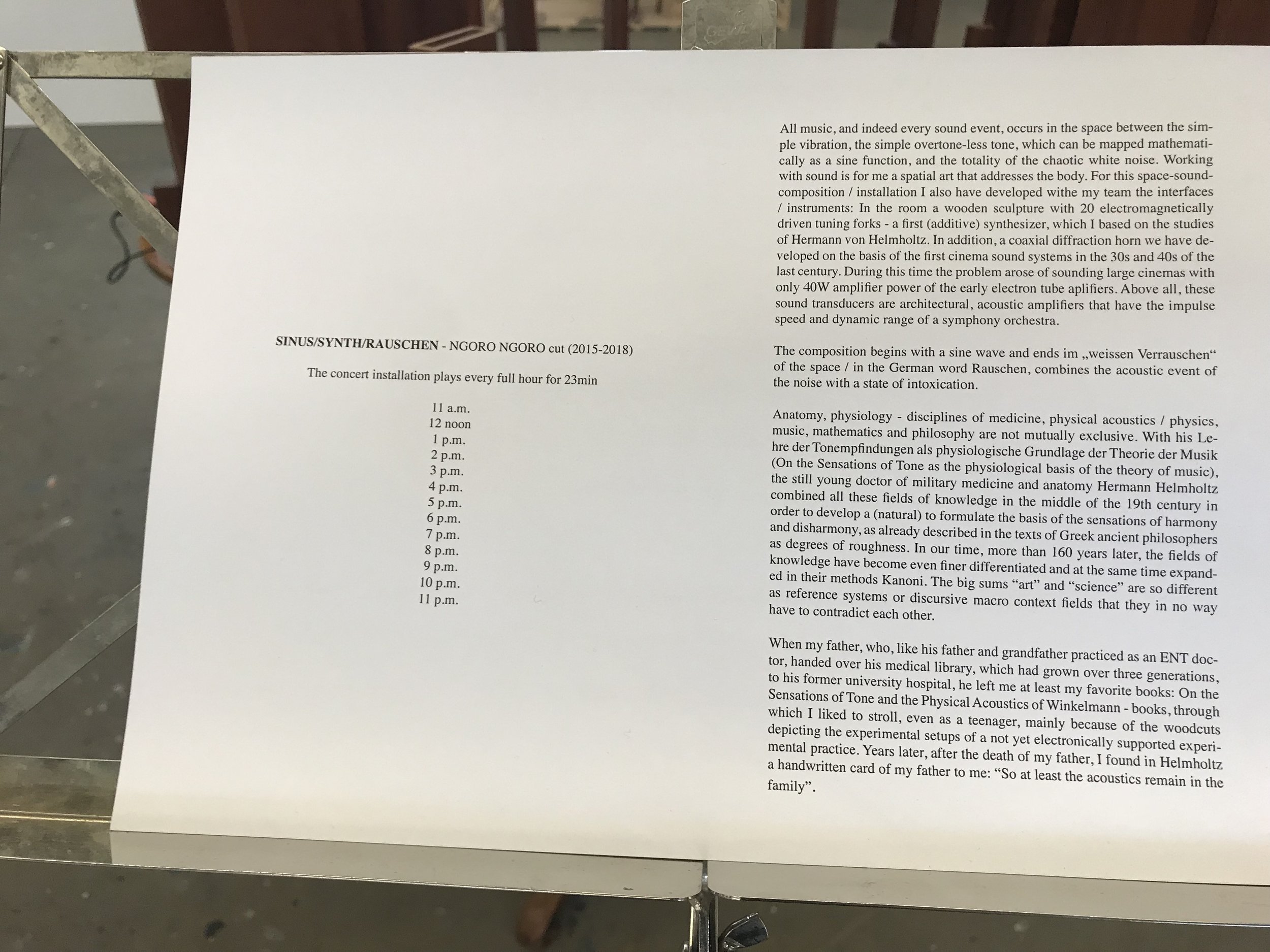Ngoro Ngoro II
/
N G O R O N G O R O I I
— Artist Weekend Berlin —
During Berlin’s Gallery Weekend 2018 and for the second time since 2015, the 6.000 square meter complex of studios in Berlin – Weissensee was the site for an extensive group exhibition. Today, it is a sprawling studio development, renovated over the past years by a group of Berlin – based artists. In 2015, there were more than 15.000 visitors to the 4 day exhibition, which this year hosts over 150 artists, including Roger Ballen, George Baselitz, John Bock, Mat Collishaw, Marlene Dumas, Martin Eder, Gilbert and George, Gregor Hildebrandt, Andy Hope 1930, Jürgen Klauke, Alicja Kwade, Mark Manders, Paul McCarthy, Marilyn Minter, Bruce Nauman, Shirin Neshat, Anselm Reyle, Robin Rhode, Anri Sala and Bill Viola. Ngorongoro is a collapsed volcanic crater in Tanzania. This paradise is also host to the largest concentration of predatory animals in Africa. The principle of this exhibition follows from this opposition. The collision of so many differing artistic identities forms the foundation of the exhibition. In contrast to normative curatorial practices, the initiators of Ngorongoro trust in this phenomenon. The selection of the participating artists does not take place according to usual curatorial parameters. Academic and conceptual discourse are not the primary concern, nor is the pressure of the market. The process is aesthetic and intuitive. Artists inviting artists. The non – commercial background of the project allows the initiators to invite both internationally known and less recognized artists to participate, as such the exhibition highlights the influence and importance of artists engagement with the work of their contemporaries.
During our visit, three artworks raised our attention
If and Only If (2018)
Anri Sala’s new film, If and Only If (2018), based on Igor Stravinsky’s Elegy for Solo Viola, also charts the course of a journey, which too becomes an integral part of its musical composition. In this case, a snail gradually travels the full length of a viola bow, innocuously moving across it, but minutely disrupting the exquisite balance on which the maestro’s playing instinctively relies. This traversal emulates a concealed dialogue between two voices that is subtly implied at the heart of the composition. The work is performed as a monologue, but it is in an allusion to dialogue, in the form of the sound of two strings, that Sala renders Stravinsky’s Elegy as a tactile interaction between the renowned violist Gérard Caussé and a garden snail.





The snail, its location and pace imposing itself on the performance, causes the viola player to simultaneously make adjustments for and thus compose with this evolving situation. The standard duration of Elegy is thus subverted through the interaction between the musician and the snail, revised to almost double its usual time. When the snail slows down, hesitating to move forward, Caussé adapts the Elegy to encourage the snail to carry on. The music becomes an organic composition and a mutual effort, created by the performance of the violist and action of the snail, resulting in a soundtrack to the snail’s ‘epic voyage.’ The artist wishes to credit and give thanks to his collaborators: Liria Bégéja, executive producer of The Last Resort and If and Only If; and Münchener Kammerorchester (MKO) and Robert Schneider for their collaboration in The Last Resort.
SINUS/SYNTHU/RAUSCHEN - NGORONGORO cut (2015-2018)
An installation about the phantasm of sound and music synthesis by the artist, composer and researcher Jan-Peter E.R. Sonntag.


The concert installation plays every full hour for 23min. All music, and indeed every sound event occurs in the space between the simple vibration, the simple overtone-less tone, which can be mapped mathematically as a sine function, and the totality of the chaotic white noise. Working with sound is for me a spatial art that addresses the body. For this space-sound-composition / installation I also have developed with my team the interfaces / instruments. In the room a wooden sculpture with 20 electromagnetically driven tuning forks a first (additive) synthesizer, which I based on the studies of Hermann von Helmholtz. In addition, a coaxial diffraction horn we have de veloped on the basis of the first cinema sound systems in the 30s and 40s of the last century. During this time the problem arose of sounding large cinemas with only 40W amplifier power of the early electron tube amplifiers. Above all, these sound transducers are architectural, acoustic amplifiers that have the impulse speed and dynamic range of a symphony orchestra.
The composition begins with a sine wave and ends im "weissen Verrauschen" of the space / in the German word Rauschen, combines the acoustic event of the noise with a state of intoxication.
Anatomy, physiology - disciplines of medicine, physical acoustics physics, music, mathematics and philosophy are not mutually exclusive. With his Lehre der Tonempfindungen als physiologische Grundlage der Theorie der Musik (On the Sensations of Tone as the physiological basis of the theory of music) the still young doctor of military medicine and anatomy Hermann Helmholtz combined all these fields of knowledge in the middle of the 19th century in order to develop a (natural) to formulate the basis of the sensations of harmony and disharmony, as already described in the texts of Greek ancient philosophers as degrees of roughness. In our time, more than 160 years later, the fields of knowledge have become even finer at the same time expanded in their methods Kanoni. The big sums "art" and "science" are so different as reference systems or discursive macro context fields that they in no way have to contradict each other.
When my father, who like his father and grandfather practiced as an ENT doctor, handed over his medical library, which had grown over three generations to his former university hospital, he left me at least my favorite books: On the Sensations of Tone and the Physical Acoustics of Winkelmann - books, through which I liked to stroll, even as a teenager, mainly because of the woodcuts depicting the experimental setups of a not yet electronically supported experimental practice. Years later, after the death of my father, I found in Helmholtz a handwritten card of my father to me: "So at least the acoustics remain in the family".
Säule
Säule - 2018 Bronze
8m high
27,5cm diameter
Gregor Hildebrandt found in 2003 chips bowels made out of records on the flee market. He started collecting those - and had the the idea to produce this sculpture.







